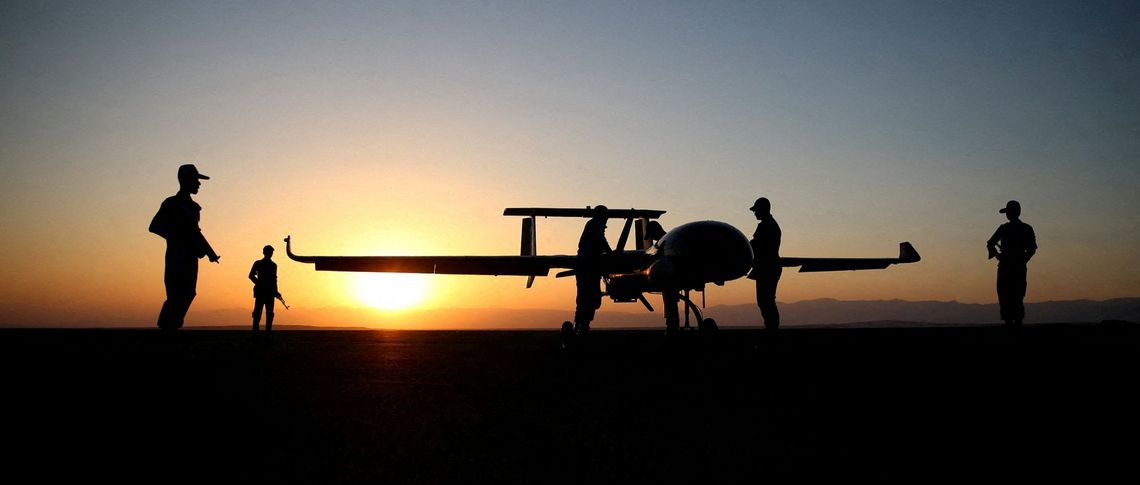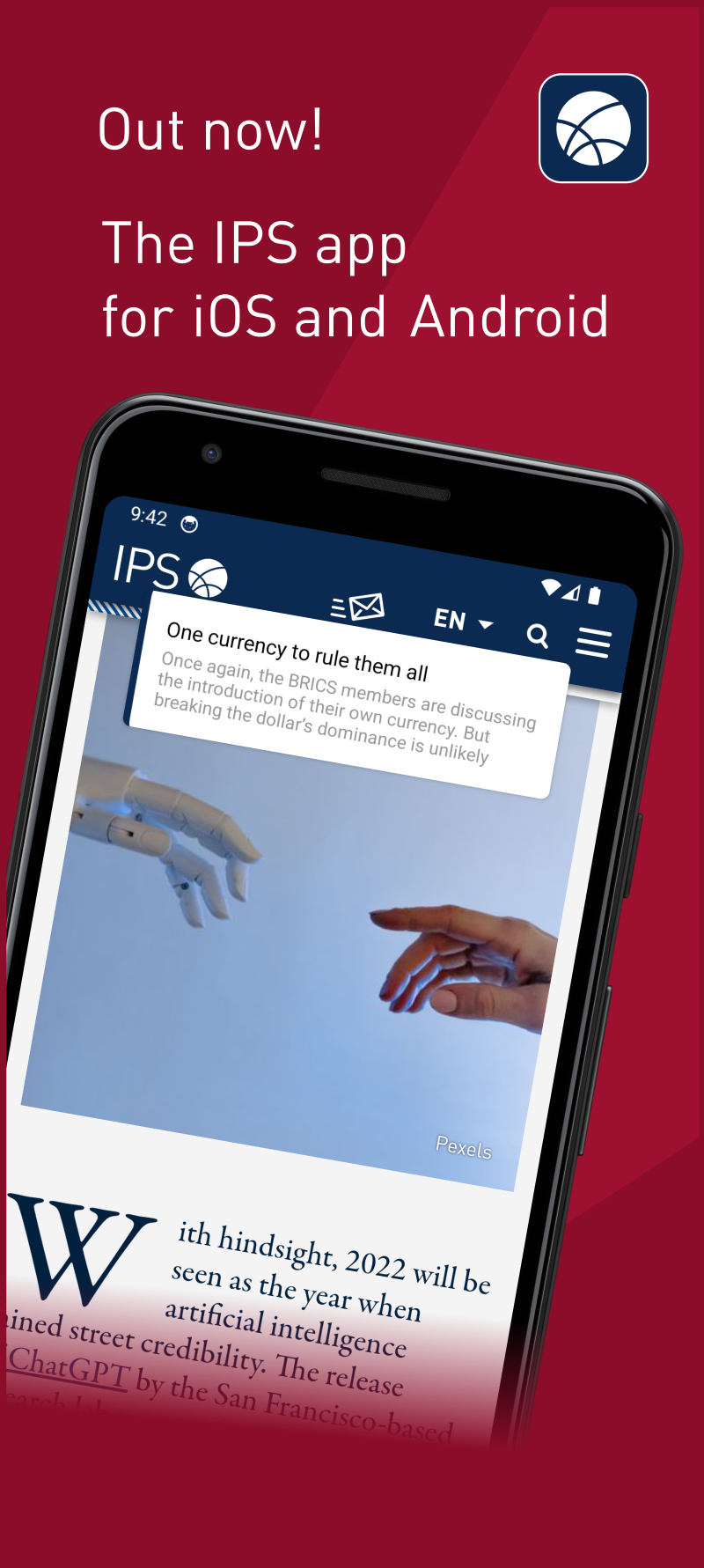As Russia suffers mounting setbacks in its war of aggression against Ukraine, a helping hand arrived from Iran. According to Ukrainian, US and EU sources, the Islamic Republic has supplied Russia with low-cost, low-flying Shahed-136 drones that pose, as The Economist put it, a fiendish military problem for Ukraine: launched in large volleys, they penetrate Ukrainian air defences, kill civilians and cause destruction of civilian infrastructure. In addition, Iranian trainers are claimed to be deployed in the Russian-occupied Crimea assisting Russian forces in their use of the drones. Thus, Iran is directly assisting Russia’s war and current aims to demoralise the Ukrainian population and undermine its will to resist.
The US and EU imposed fresh sanctions on individuals and entities in Iran involved in the supply of drones to Russia. Ukraine announced its intention to severe diplomatic relations with Iran. Lithuania’s foreign minister, using somewhat colourful language, called for new sanctions against Iran. While US intelligence, having correctly predicted the supply of drones in the summer, now warns that Iran could also deliver ballistic missiles to help Russia to replenish its rapidly depleting stock. That would further escalate Iran’s engagement in the war and increase pressure to counteract it.
Tehran remains unfazed in the face of this mounting outrage. The permanent representation of Iran to the UN denied the supplies, which was mocked even by some Iranian conservative analysts. A mutual understanding might have developed between Moscow and Tehran: for Moscow to admit that it is performing so badly that it is forced to rely on Iran would be embarrassing; while for Tehran some distance would be useful as the majority of Iranians support Ukraine, not their old imperial adversary Russia. Yet the rulers of the Islamic Republic have evidently decided that the benefits of allying with Russia outweigh the costs.
The future is in the East
Such a view is rooted in the general outlook of the currently dominant conservative, hard-line faction In Tehran: The West is declining, as epitomised by the US’ humiliating withdrawal from Afghanistan and mounting economic difficulties in western democracies. The East, by contrast, is rising, with a new multipolar world emerging in Eurasia under the leadership of Russia and China. In this reading, Iran has been tricked by the world powers through the JCPOA (the nuclear agreement) to give up its leverage while not obtaining the promised sanctions relief that would have refloated its economy. Even as the Biden administration, together with its European allies, tried to revive the pact, any economic benefits to Iran would have been ephemeral as a new Republican president would renege on the deal anyway, possibly as soon as 2025. In fact, hopeful Republicans have made it abundantly clear that they would do exactly that. Seen from this perspective, it made scarce sense for Tehran to roll back its nuclear advances and associated leverage in exchange for uncertain and short-lived economic relief.
These calculations underpinned the ‘look to East’ foreign policy doctrine adopted by the conservative Ebrahim Raisi administration. Iran’s full integration into the Shanghai Cooperation Organization (SCO), made official at the summit in Samarqand (Uzbekistan) in September 2022, stands as a tangible deliverable of this policy.
The supply of drones and possibly missiles in the near future is also part of Iran’s own deterrence strategy: the demonstrative effect of the havoc Iran’s weaponry can wreck is intended as a message to its regional enemies.
Neither the pro-East orientation nor SCO membership in themselves, however, determined Iran’s active military support for Russia. After all, most members of the SCO, particularly the Central Asian states and India, showed a distinct lack of enthusiasm for Putin’s adventurism. Unlike these countries, however, Iran is isolated from the West, which makes it more eager to stick with Russia in the expectation of security and economic benefits. The fact that Moscow and Tehran are converging in their ideological opposition to what they see as the US-led hegemonic world order is fuelling this alliance of expedience.
Having betted on Russia, it is now imperative for Tehran to avoid that it loses the war in Ukraine. But the supply of drones and possibly missiles in the near future is also part of Iran’s own deterrence strategy: the demonstrative effect of the havoc Iran’s weaponry can wreck is intended as a message to its regional enemies, such as Israel and Saudi Arabia, but also Iraqi Kurdistan, Azerbaijan, Bahrain, and the United Arab Emirates, in fact any regional entity thought to enable Tehran’s enemies.
Domestic turmoil
The domestic unrest triggered by the murder of the young woman Mahsa Amini by the so-called ‘morality police’ has further incentivised the regime to dissuade its regional adversaries from attempting to pressure Tehran in its moment of weakness. Displaying Iranian drone and missile capabilities is a way of showing that the country’s defence was in no way compromised by the domestic turmoil – in addition to the strikes in Iraqi Kurdistan which were designed to convey the same message.
The regime in Tehran sees little downsides in pursuing this strategy. It is not concerned that assisting an aggressor – Russia – undermines its own long-held narrative of the Islamic Republic as a victim of Saddam Hussein’s aggression in 1980s. The rulers in Tehran appear to have concluded that the perceived benefits of an alliance with Russia outweigh any moral high ground, for which they feel Tehran was never rewarded anyway.
The potential definitive death of the JCPOA also doesn’t seem to be a major factor in Tehran’s decision-making process. Even as Iranian diplomats try to project an impression that the United States and its allies are desperately seeking to revive the accord, it is difficult to imagine the West showering the regime with billions in sanctions relief as long as it is deepening its war alliance with Russia. And the demise of the JCPOA is seen by the hard-line faction as unchaining Iran’s progress towards the nuclear bomb – the ultimate deterrent. It was under the influence of these factions that Tehran missed an opportunity to clinch the deal in August.
While the current protests were triggered by cultural restrictions, especially on women, previous bout of mass unrest, in 2019, was provoked by the dire socio-economic conditions of the lower classes.
The threat of new crippling sanctions, as voiced by the Lithuanian foreign minister, is also unlikely to act as a deterrent. By failing to make the original JCPOA create significant economic relations with Iran, the West has already sanctioned itself out of any leverage over Tehran.
As the latest protests have shown, however, the regime faces significant domestic vulnerabilities. While these protests were triggered by cultural restrictions, especially on women, previous bout of mass unrest, in 2019, was provoked by the dire socio-economic conditions of the lower classes. Different strands of discontent – socio-economic, cultural and political – may yet coalesce into a potent opposition movement. It will be far more radical in its demands than the timid reformist trend that sought an evolution within the framework of the Islamic Republic.
The regime’s response might include some measure of cultural liberalisation, such as the relaxation of dress codes for women, if not an abolition of the mandatory hijab altogether, especially if the Islamic Revolutionary Guards Corps (IRGC) gain even more political prominence at the expense of the clerics. That, however, may be too little, too late as the demise of the JCPOA would deprive the regime of the means to rapidly improve the economic situation. Increased ties with Russia – another heavily sanctioned country – will not compensate for the loss of opportunities and income associated with the death of the JCPOA. The alliance with Russia may be expedient for the Iranian regime from a narrow security point of view, but it may yet prove to be a strategic disaster in a longer term.
This article reflects the personal views of the author and not necessarily the opinions of the S&D Group or the European Parliament.






